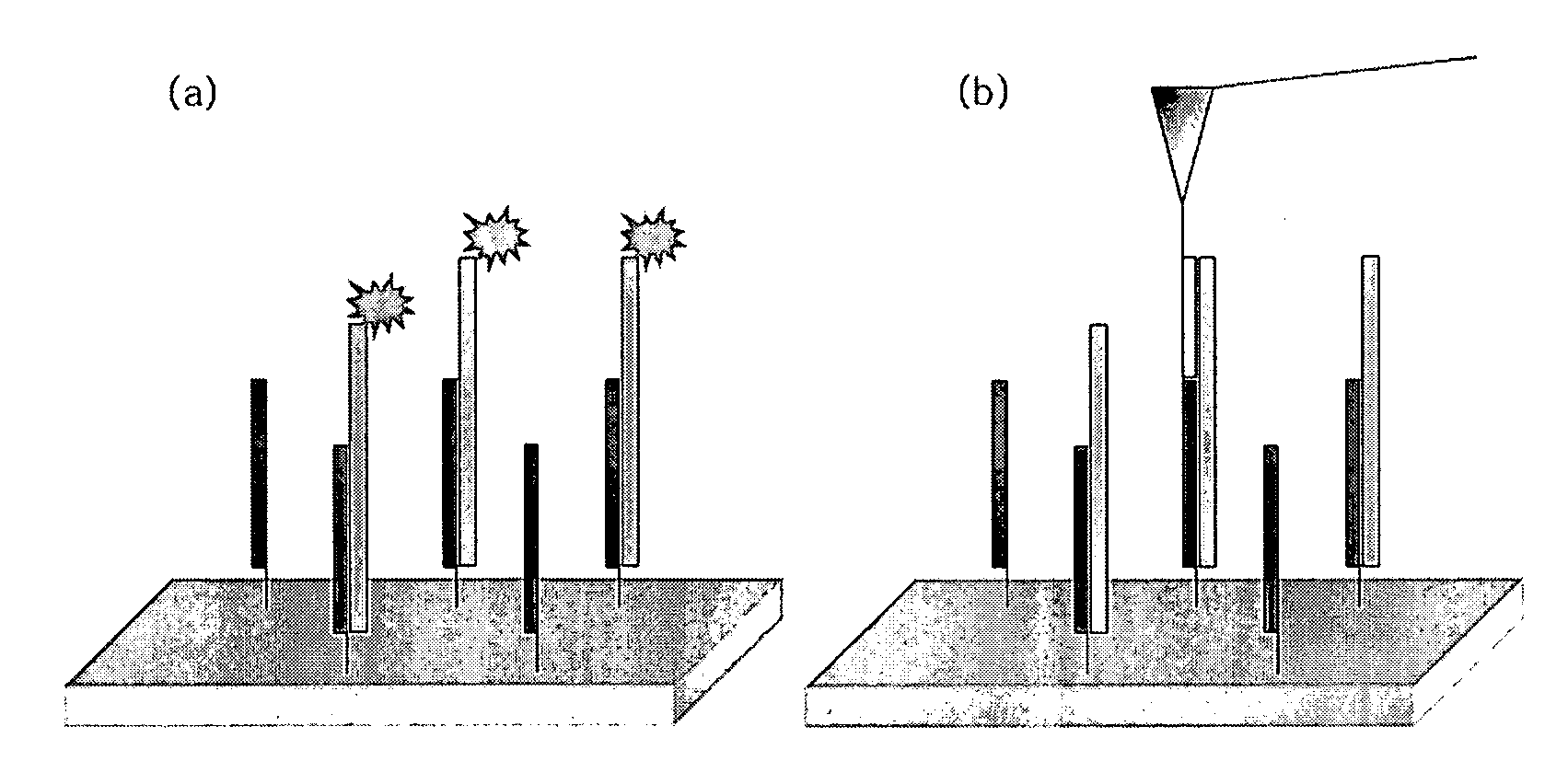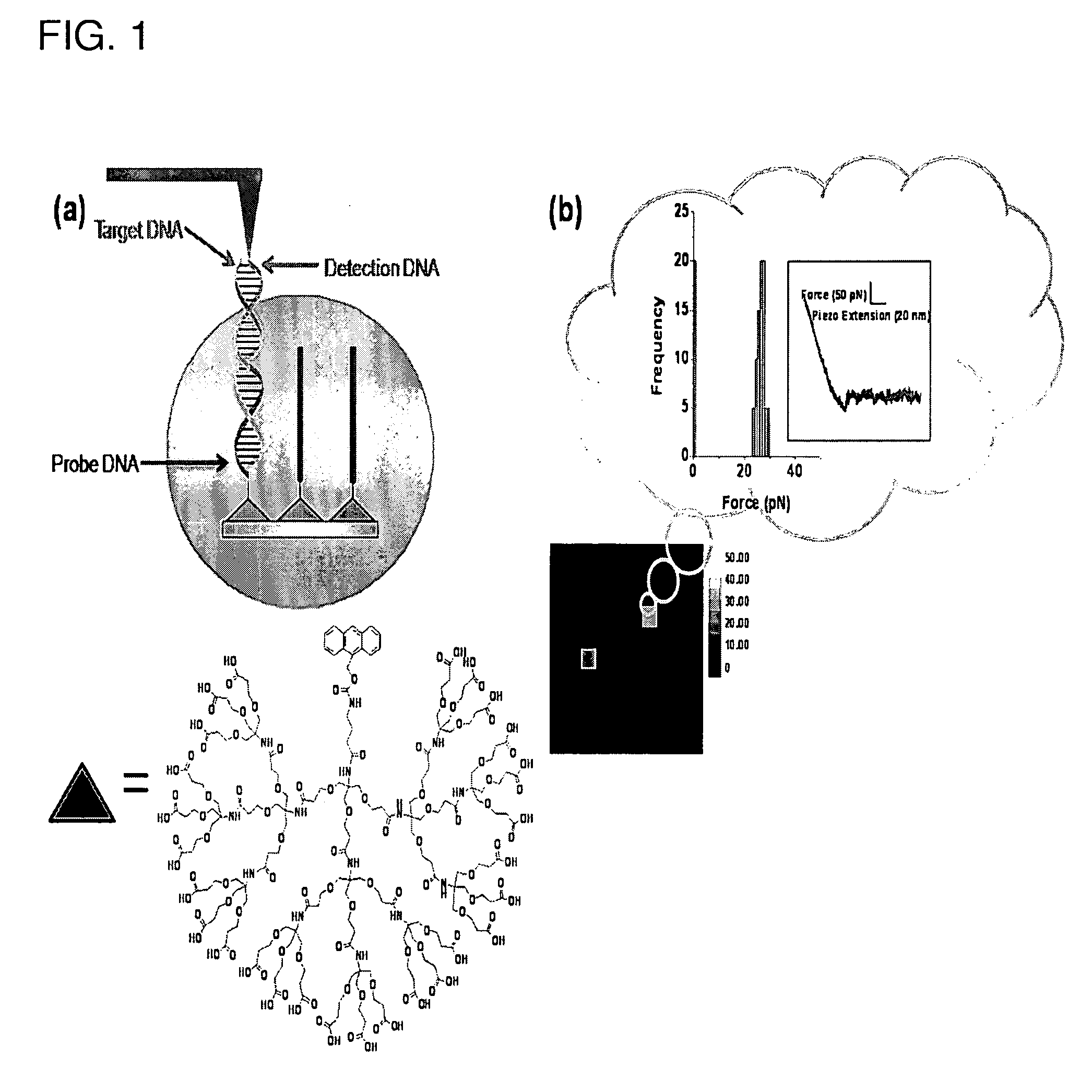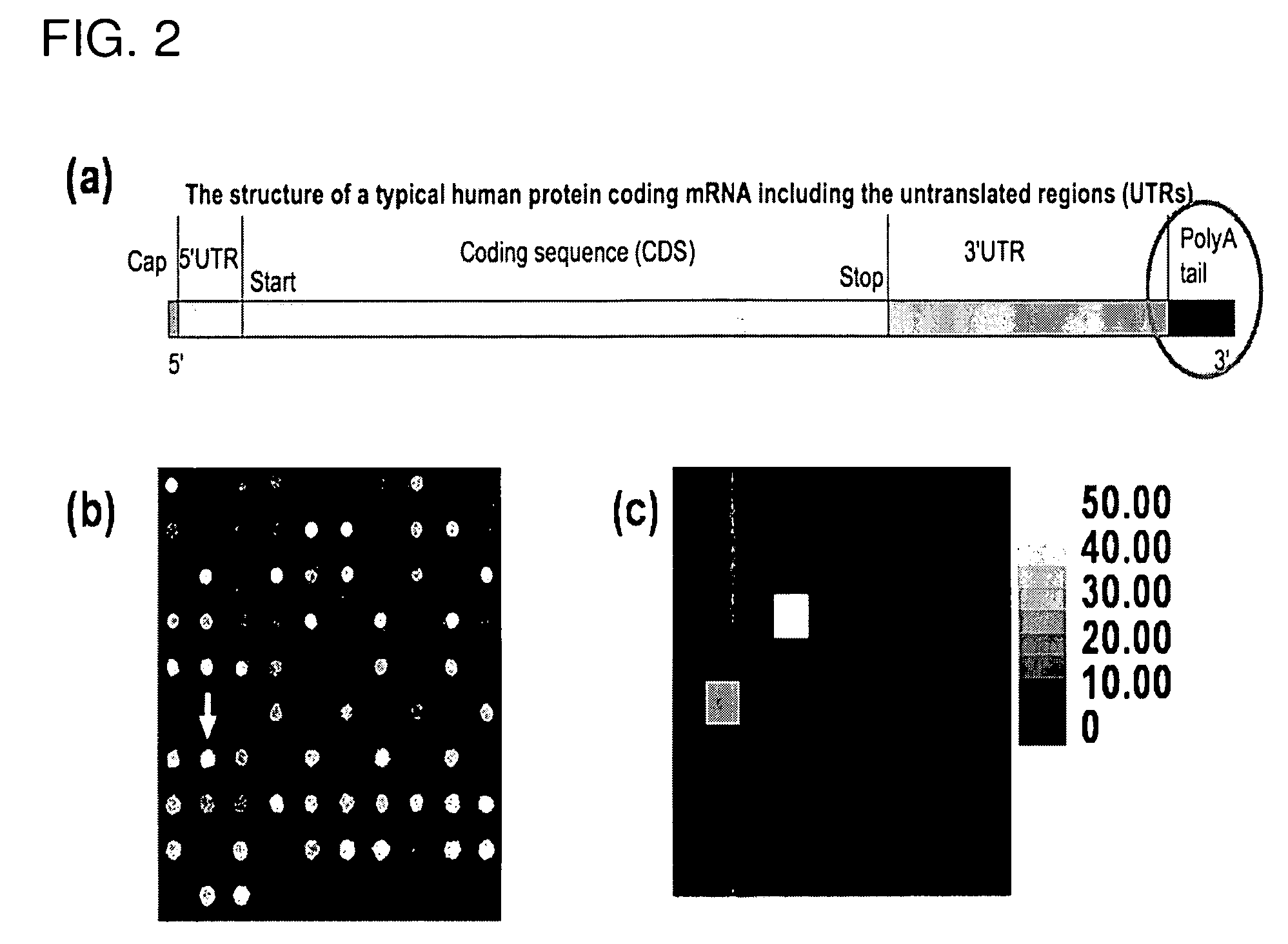Atomic force microscope as an analyzing tool for biochip
a biochip and microscope technology, applied in the field ofatomic force microscopy, can solve the problems of biomolecules lacking intrinsic properties, biomolecules still suffering from limitations, and conventional microarrays have limitations in flexibility, speed, cost, and sensitivity, and achieve good measurable force related to hybridization/binding events, easy to adapt to other biochip systems, and easy to detect the effect of afm
- Summary
- Abstract
- Description
- Claims
- Application Information
AI Technical Summary
Benefits of technology
Problems solved by technology
Method used
Image
Examples
example 1
Materials and Methods
[0141]General. The silane coupling agent N-(3-(triethoxysilyl)propyl)-O-polyethyleneoxide urethane (TPU) was purchased from Gelest Inc. All other chemicals are of reagent grade from Sigma-Aldrich. The UV-grade fused-silica plates were purchased from CV1 Laser Co. The polished prime Si (100) wafers (dopant, phosphorus; resistivity, 1.5-2.1 Ω·cm) were purchased from MEMC Electronic Materials Inc. Deionized water (18 MΩ·cm) was obtained by passing distilled water through a Bamstead E-pure 3-Module system.
example 2
Example 2.1
[0142]Cleaning the Substrates. Silicon wafers (and fused-silica plates for dendron surface coverage analysis; see the Supporting Information) were sonicated in Piranha solution (concentrated H2SO4 / 30% H2O2=7:3 (v / v)) for 4 h (Caution: Piranha solution can oxidize organic materials explosively. Avoid contact with oxidizable materials.). The substrates were washed and rinsed thoroughly with deionized water after sonication. Subsequently, they were immersed in a mixture of deionized water, concentrated ammonia solution, and 30% hydrogen peroxide (5:1:1 (v / v / v)) contained in a Teflon beaker. The beaker was placed in a water bath and heated at 80° C. for 10 min. The substrates were taken out of the solution and rinsed thoroughly with deionized water. Again, the substrates were placed in a Teflon beaker containing a mixture of deionized water, concentrated hydrochloric acid, and 30% hydrogen peroxide (6:1:1 (v / v / v)). The beaker was heated at 80° C. or 10 min. ...
example 2.2
[0143]AFM Probe Pretreatment. Standard V-shaped silicon nitride cantilevers (MLCT-AUNM) with pyramidal tips (Veeco Instruments; k=10 pN / nm) were first oxidized by dipping in 10% nitric acid and heating at 80° C. for 20 min. The cantilevers were taken out of the solution and washed and rinsed thoroughly with a copious amount of deionized water. The clean cantilevers were dried in a vacuum chamber (30-40 mTorr) for about 20 min and used immediately for the next steps.
PUM
 Login to View More
Login to View More Abstract
Description
Claims
Application Information
 Login to View More
Login to View More - R&D
- Intellectual Property
- Life Sciences
- Materials
- Tech Scout
- Unparalleled Data Quality
- Higher Quality Content
- 60% Fewer Hallucinations
Browse by: Latest US Patents, China's latest patents, Technical Efficacy Thesaurus, Application Domain, Technology Topic, Popular Technical Reports.
© 2025 PatSnap. All rights reserved.Legal|Privacy policy|Modern Slavery Act Transparency Statement|Sitemap|About US| Contact US: help@patsnap.com



